In my short time in New Zealand, I have observed some concern about Census data being ‘out-of-date’, with that concern being fuelled by it now being delayed to 2013. However, I believe the 2006 Census data is alive and well! There is in fact plenty more work to do analysing the existing Census data (1996, 2001 & 2006) to better understand our cities and places; and to use it to raise questions and issues in anticipation of receiving the next round of Census data some time in 2014. Here’s an example, simply using 2006 Census data…
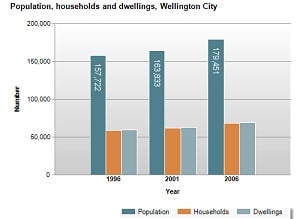
Recently .id presented our draft forecasts to the team at Wellington Council. We showed a chart (below) intending to illustrate the diversity of the residential role and function of different suburbs across the City. It included 4 areas – Wellington Central, Karori, Mt. Victoria and Tawa/Grenada North/Takapu Valley.
The information presented in this chart is a testament to the way that Census data can tell us a lot not only about people, but also about places.
Relationship in households, 25-29 year olds, for selected areas in Wellington (2006 Census)
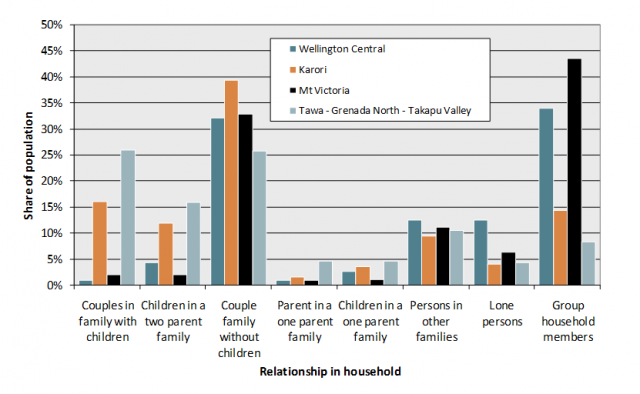
The information covers an interesting age group (in terms of living arrangements). That is, if you are a 25 to 29 year old, you are at a point in your ‘housing career’ where we observe the most diverse range of living arrangements being expressed. You could be at virtually any point in your housing career – from still living at home with your parents (see Matthew’s very popular blog, ‘Will they ever leave home’) to being in a ‘Couple with Children household’(that is, a young parent) – and most other living arrangements in between – share household, lone person, couple without kids, etc.
Overall, the chart reveals that the bulk of 25-29 year olds live in Group households or as Couples without children – no surprises there. To a lesser extent there are a few 25-29 year olds who are mature enough to have kids (Couples in family with children); and thankfully to a lesser extent, there are 25-19 year olds immature enough to still be living at home with their parents!
To get some insight into these patterns, it is interesting to look at the difference in the physical form of each suburb as represented by the dominant form of dwelling structure of each place – observed from the Census data from the Wellington Community Profile.
The Dwelling Structure chart for Wellington Central reveals a very urban place with over 60% of its dwelling stock being high density.
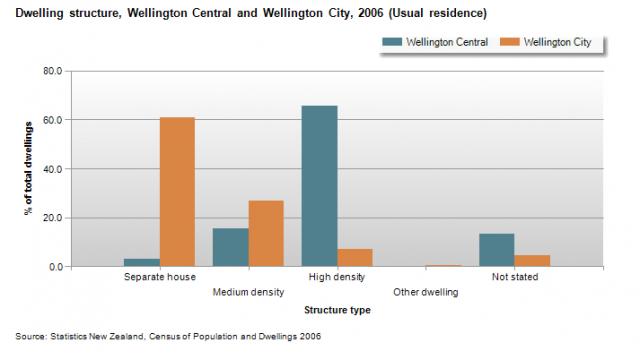
Karori and Tawa/Granada North/Takapu Valley are just the opposite and appear very suburban, with an overwhelming predominance of separate dwellings, low proportions of medium density and no high density dwelling stock.
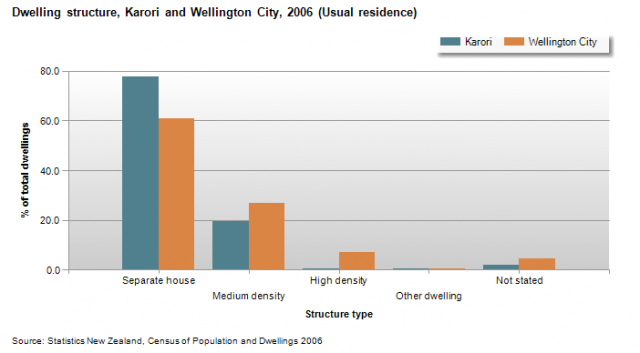
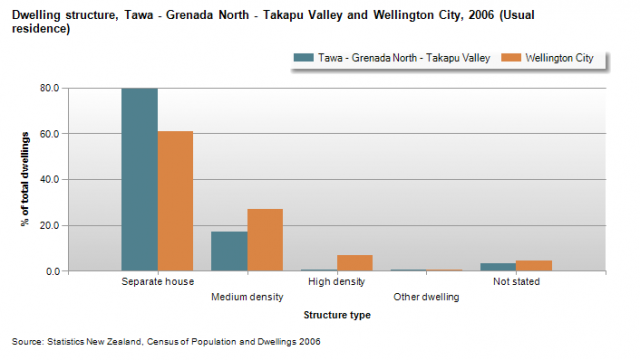
Mount Victoria is somewhere in between and has the most diverse housing stock with 50% of its dwellings being medium density; almost 40% are separate houses (lower density) and it has a higher proportion of high density dwellings than the Wellington City average.
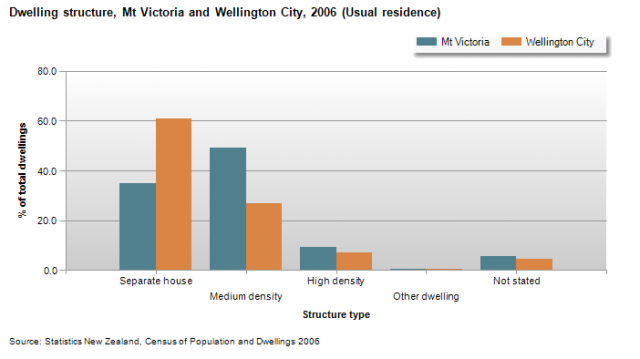
Now, referring back to the ‘Relationship in Households for 25-29 Year Olds’ chart at the top of this blog…
Of the four selected areas of Wellington, if you are a young adult living in a Group household, you will be most likely to be located in Mount Victoria or Central Wellington.
If you are living as a couple without kids, you will be living any four of those areas – now that is interesting; it’s as if there are different housing ‘sub-markets’ of young adults living as childless couples – to put it crudely, there is a ‘suburban’ young couples sub-market and an ‘urban’ one.
If you have kids, you’re going to the suburbs! That is young couples WITH kids are most likely to be living in the more ‘suburban’ places of Karori, or Tawa/Grenada North/Takapu Valley.
Finally, if you’re a young adult still living with the folks, you’ll be living in the suburbs in the house you were brought up in. If you are not showing any signs of leaving soon, perhaps your parents are planning to move out themselves and leave you there (“…you can have the house!”). They’ll move into a trendy apartment in town! Now, if that becomes a trend, the next Census may reveal a new housing ‘sub-market’ of the of empty nesters in apartments in the city… not to mention leaving behind a ‘residue’ housing ‘sub-market’ of young siblings living in Group households in the suburbs.
.id is a team of population experts who combine online tools and consulting services to help local governments and organisations decide where and when to locate their facilities and services, to meet the needs of changing populations. Access our free demographic resources and tools here.















